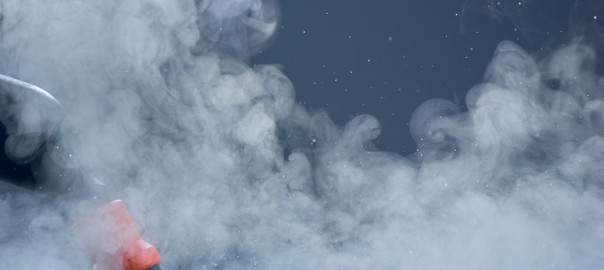Whether you’ve spilt red wine on the carpet, or you’re looking to undertake a deep end-of-lease clean, it’s important to choose the right carpet cleaning method for the job. In this guide to carpet dry cleaning vs steam cleaning, we cover the differences between the two methods, their pros and cons, and the best use cases for each of them. We also include a few carpet care tips to help you get the most out of either method.
Carpet dry cleaning vs. steam cleaning—what is the difference?
Put simply, the main difference between carpet dry cleaning and steam cleaning is the amount of water used in each method. As the name suggests, dry cleaning uses either no, or very little moisture to remove stains and freshen the carpet. Instead, dry cleaning involves applying chemicals to the carpet—either in powder or liquid form—to break down dirt and other particles attached to the carpet’s fibres. These cleaning agents are often brushed into the carpet before being removed along with dirt and other sediment that’s loosened from the carpet after the cleaning agents have had a chance to work on the stains.

Carpet steam cleaning uses steam
By comparison, steam cleaning—otherwise known as wet carpet cleaning—uses hot water to extract dirt from the carpet. Steam cleaning methods work by applying hot water to the carpet with a pressurised wand to dissolve and dislodge dirt from the carpet’s fibres. This debris is then extracted along with the water. To help the water penetrate the carpet effectively, stains are often pre-treated to break the carpet’s surface tension. However, unlike carpet shampoo methods, steam cleaning doesn’t tend to use heavy cleaning agents.
When should you use carpet dry cleaning vs steam cleaning?
One of the main reasons people choose carpet dry cleaning over steam cleaning is the faster drying time. Because little to no water is used to dry clean the carpet, it’s an ideal method for high-use areas—such as hallways, entrance ways, workplace foyers, office spaces and hotel bedrooms—where it’s not practical to keep people off the carpet for an extended period of time. Dry cleaning is also a good method to use for regular carpet cleans because it’s a quick way to pick up dirt and debris and deodorise smells.
Generally speaking, steam cleaning offers a significantly deeper clean than dry cleaning. This makes it the ideal option for particularly dirty carpet that hasn’t been cleaned in a while. It also makes it a good option for carpet with long fibre lengths. Because the steam penetrates the carpet more deeply than a dry clean can, steam cleaning effectively dislodges dirt and debris such as pet hair, which can become entangled in the longer fibres.
Steam cleaning is also great if you want to do a deep clean of a heavily trafficked area. Many people shy away from using steam cleaning methods for high-use areas because of the longer drying time associated with this method. However, these carpets are often the ones most in need of a deep rejuvenating clean because the high volume of foot traffic compacts dirt in the carpet.
Finally, steam cleaning is an ideal method to use if you have allergies, because it doesn’t rely on the same cleaning products as many other carpet cleaning methods.
Pros and cons of carpet dry cleaning
Dry cleaning is a great method for routine carpet maintenance and is particularly good for heavily trafficked areas where you need a quick clean. Some of the advantages of carpet dry cleaning include:
- Dry cleaning methods use either no or very little water. Unlike carpet steam cleaning, this means you don’t need to wait for the carpet to dry before you can walk on it again.
- The cleaning agents used in the dry cleaning process help to remove dirt more effectively than if you were to simply vacuum the carpet. They are particularly good at breaking down oil-based stains, which can be challenging to remove with water alone. Dry cleaning techniques also help to kill bacteria, which deodorise any smells that might be present from spills and animals.
- Dry cleaning is suitable for delicate carpets that would be damaged by using water, or applying it at high pressure.
Despite these benefits, there are a few downsides to carpet dry cleaning. These include:
- Dry cleaning does not clean the carpet as deeply as steam cleaning. While it is an effective method if used regularly alongside other good carpet care tips, it can leave dirt embedded within the carpet. Over time, dirt has an abrasive effect on carpet fibres so it’s important to complement dry cleaning with occasional deep steam cleans.
- Dry cleaning tends to rely on strong solvents to break down stains and dirt. If not removed properly residue may be left behind. These chemicals can tend to have quite a strong smell and are not suited to people with sensitivities to cleaning products.
Pros and cons of carpet steam cleaning
Generally speaking, steam cleaning offers a significantly deeper clean than dry cleaning. However, this needs to be balanced against the longer drying time associated with cleaning the carpet with a water-based method.
Some of the benefits of carpet steam cleaning include:
- Steam cleaning is highly effective at removing particles deeply embedded in the carpet, giving you the best chance of removing stains and dirt.
- Steam cleaning is more allergy-friendly than dry cleaning because it doesn’t rely on shampoos or other chemicals. This makes it a great option for people with sensitivities to detergent.
- Because of the high temperature of the water used to clean the carpet, steam cleaning does a better job of killing bacteria and mould than other carpet cleaning methods.
Some of the cons of carpet steam cleaning include:
- The main downside to carpet steam cleaning is that it takes longer for the carpet to dry after a steam clean because there will be some residual water left over. It generally takes up to 24 hours for the carpet to dry, although in some cases it can take several days for the carpet to dry fully. Even if the carpet might seem dry, it’s important to wait for the full drying time to pass before walking on it, otherwise you risk ruining the good results by traipsing dirt back into the carpet.
- Steam cleaning can be less effective at removing oily stains than other methods because it typically uses less chemicals. This can cause stains to reappear if the job isn’t done properly because dirt reattaches to these patches of the carpet. It’s therefore important that oily stains are pre-treated to help break down any residue before the steam clean.
Top tips to get the most of your carpet clean
Whether you choose to dry clean or steam clean your carpet, the end results can be significantly improved by following a few simple carpet care tips. In particular, it’s a good idea to:
- Vacuum regularly, to prevent dirt and other particles from building up in the carpet.
- Spot clean spills when they happen, to minimise the chance of stains and prevent oily substances from attracting dirt.
- Consider using floor mats or taking your shoes off indoors, to limit the amount of dirt that comes inside in the first place.
Combined with a professional carpet cleaning once a year, following these simple steps will help keep your carpet in good condition no matter which side of the carpet dry cleaning vs. steam cleaning debate you land on.





